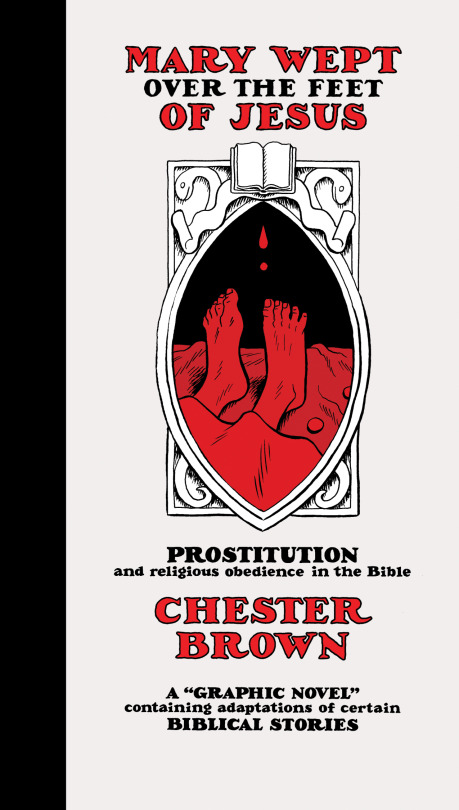
An Interview with Graphic novelist Chester Brown
I first encountered Chester Brown’s starkly beautiful cartooning in a Canadian Literature class. His graphic novel, Louis Riel, had recently unearthed a piece of uncomfortable Canadian history—the execution of a 19th century political leader—and liberal arts professors across the country were collectively swooning over a comic book they could finally approve of. I too was impressed, if only for the book’s extensive “Notes” section—unusual for a genre where pictures usually replace most words. I argued with his notes in the margins. “Why exaggerate the linguistic divide?!” I scrawl-yelled nonsensically on one page.
Only a couple of years later, I found myself arguing with Chester in the margins of his next book, Paying For It, a graphic memoir about paying for sex, which this time included not only an extensive notes section, but a full-length manifesto for the decriminalization of sex work. By then I was an intern learning Photoshop at the publishing house Drawn & Quarterly, making sure the margins were properly aligned before the book went to print. “It’s not that I totally disagree with you,” I wrote in the back of an advanced copy, “I just think the argument is more complicated than you are making it out to be.” His writing can sometimes feel like he’s chosen to argue with you personally, after getting to know the contents of your brain.
Now, after my third time reading Chester, I’ve come to expect and appreciate the margin-arguing experience. It’s not every day that a book can engage its reader fully enough to keep her up all night considering her position on prostitution. This is what Chester does best, and what he continues to do best in his latest graphic novel, Mary Wept Over the Feet of Jesus: prodding and unearthing the uncomfortable, forcing you to engage, raising your blood pressure a touch. Mary Wept contains several graphic adaptations / interpretations of Bible stories that deal with prostitution in some way, and his major controversial claim is that Mary, the mother of Jesus, might actually have been a prostitute (hence, the mystically-explained pregnancy). I didn’t have as many margin-arguments with this book, but I definitely had some.
The thing is, in person and over the phone, Chester is not even remotely close to the man-behind-the-margins who I had imagined myself arguing with. He is actually the kindest, most non-confrontational cartoonist I’ve ever had the pleasure of speaking with. It’s hard to believe he is the same man behind such strongly-articulated claims as: “we should all be paying for sex.” But this is part of his brilliance. When we spoke over the phone...
You have reached your article limit
Sign up for a digital subscription and continue reading all new issues, plus our entire archives, for just $1.50/month.
Already a subscriber? Sign in




